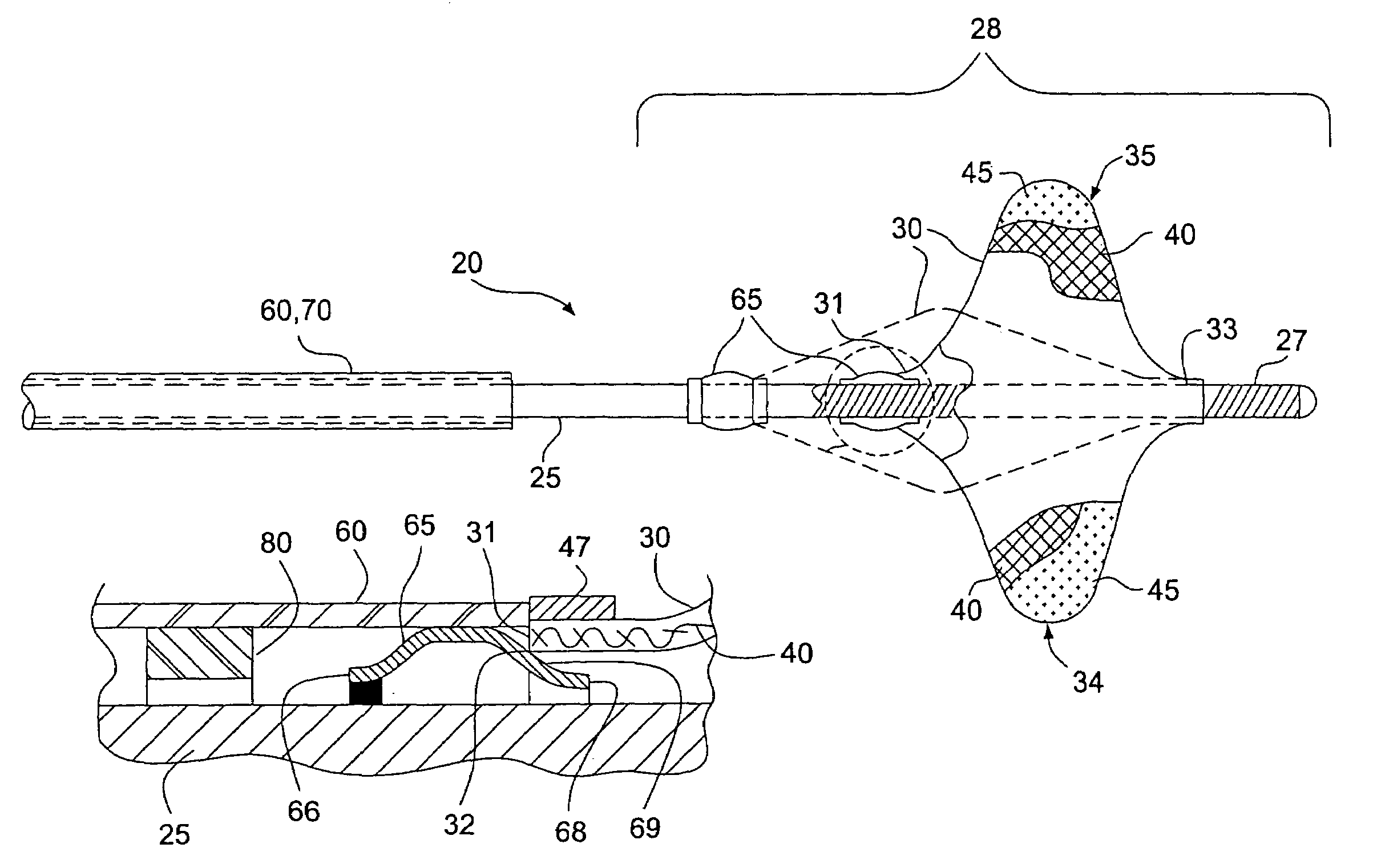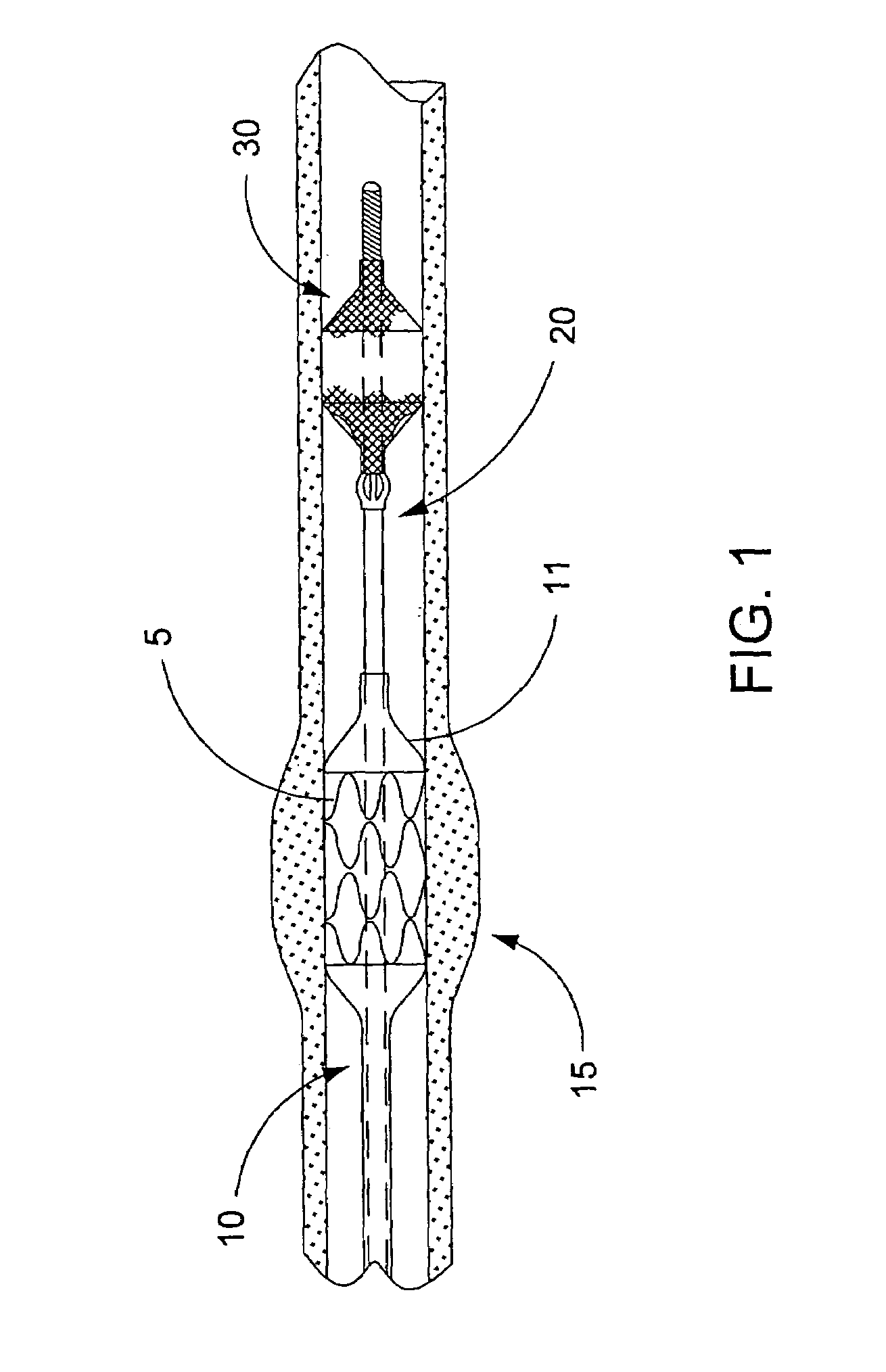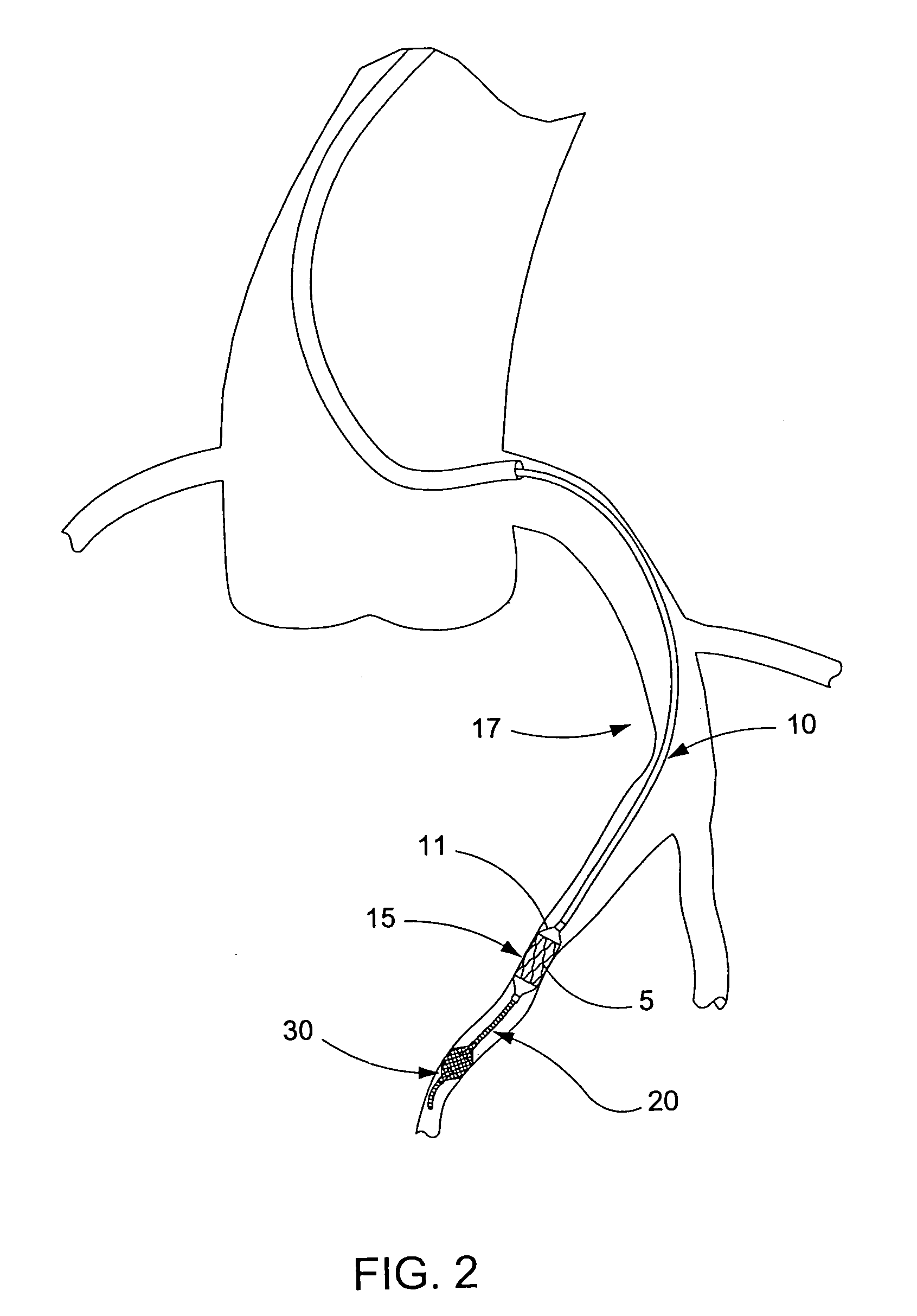Temporary device for capturing embolic material
a technology of embolic material and temporary device, which is applied in the field of intraluminal devices, can solve the problems of inability to capture embolic material, and large bores of the encased filter, and achieves the effects of reducing the effect of physical properties of the wire, enhancing radiopacity, and undiminished physical performan
- Summary
- Abstract
- Description
- Claims
- Application Information
AI Technical Summary
Benefits of technology
Problems solved by technology
Method used
Image
Examples
Embodiment Construction
[0043]The present invention is a temporary device for use during invasive procedures, such as interventional catheterizations or other procedures where the practitioner desires to capture embolic material that may be dislodged during the procedure. Intravascular procedures such as PTCA or stent deployment are often preferable to more invasive surgical techniques in the treatment of vascular narrowings, called stenoses or lesions. With reference to FIGS. 1 and 2, deployment of balloon expandable stent 5 is accomplished by threading catheter 10 through the vascular system of the patient until stent 5 is located within a stenosis at predetermined treatment site 15. Once positioned, balloon 11 of catheter 10 is inflated to expand stent 5 against the vascular wall to maintain the opening. Stent deployment can be performed following treatments such as angioplasty, or during initial balloon dilation of the treatment site, which is referred to as primary stenting. Catheter 10 is typically g...
PUM
 Login to View More
Login to View More Abstract
Description
Claims
Application Information
 Login to View More
Login to View More - R&D
- Intellectual Property
- Life Sciences
- Materials
- Tech Scout
- Unparalleled Data Quality
- Higher Quality Content
- 60% Fewer Hallucinations
Browse by: Latest US Patents, China's latest patents, Technical Efficacy Thesaurus, Application Domain, Technology Topic, Popular Technical Reports.
© 2025 PatSnap. All rights reserved.Legal|Privacy policy|Modern Slavery Act Transparency Statement|Sitemap|About US| Contact US: help@patsnap.com



